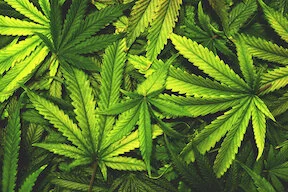Recreational Drugs: an illicit narcotic taken on an occasional basis for pleasure. (Oxford) Every culture has found chemical means of transcendence, and at some point the use of such intoxicants becomes institutionalized at a magical or sacramental level; the sacramental use of psychoactive plant substances has a long history and continues to the present day in various shamanic and religious rites around the world. (Sacks6, 148)
At a humbler level, drugs are used not so much to illuminate or expand or concentrate the mind, but for the sense of pleasure and euphoria they can provide. All these cravings, high or low, are nicely met by the plant kingdom, which has various psychoactive agents that seem almost tailored to the neurotransmitter systems and receptor sites in our brain. (Sacks6, 148)
Hallucinogens: any naturally-derived or synthetic substances that can induce “hallucinations.” (NCIt) Drugs that produce hallucinations. Formerly used to treat certain types of mental illness. (OxfordMed) Drugs capable of inducing “illusions,” hallucinations, “delusions,” paranoid (ideas), and other alterations of mood and thinking. Despite the name, the feature that distinguishes these agents from other classes of drugs is their capacity to induce states of altered perception, thought, and feeling that are not experienced otherwise. (MeSH) Act by boosting “serotonin” in the brain. (Sacks6,169) In the late 1950’s LSD, as well as psilocybin mushrooms and morning glory seeds (both of which contain LSD-like compounds), became widely available, ushering in a new hallucinogenic drug Aage and a new word to go with it: ‘psychedelic.” (Sacks6, 158)
Lysergic Acid Diethylamide (LSD): acts on serotonin receptors. (LeDoux, 58) A potent hallucinogen, but the mechanisms of that effect are not well understood. (MeSH) An illegal hallucinogenic drug. Alternations in sight, hearing, and other senses occur. "Psychotic" effects, "depression," and confusion are common. Tolerance to the drug develops rapidly. Formerly used to aid treatment of certain psychological disorders. (OxfordMed) First synthesized by Albert Hofmann, a Swiss chemist, in his Sandoz lab in 1938. (Sacks6,149)
Mescaline: hallucinogenic alkaloid isolated from the flowering heads (peyote) of a Mexican cactus used in Indian religious rites and as an experimental (drug). Among its cellular effects are actions at some types of serotonin receptors. It has no accepted therapeutic uses although it is legal for religious use by members of the Native American Church. (MeSH) My the 1890’s, Westerners were also beginning to sample peyote, previously used only a a sacrament in certain Native American traditions. (They found that) Mescal promised an experience not only richer, longer-lasting, and more coherent than that induced by hashish, but one with the added promise of transporting one to mystical realms of unearthly beauty and significance. (Sacks6, 152) Also referred to as ‘peyote’ and ‘mescal.’
Psilocybin: a substance being studied in the treatment of anxiety or depression in patients with advanced cancer. It is taken from the mushroom ‘psilocybe mexicana.’ Psilocybin acts on the brain to cause hallucinations (sights, sounds, smells, tastes, or touches that a person believes to be real but are not real). (NCIt) An alkaloid isolated from various (types) of “fungi” with hallucinogenic, anti-anxiety, and ‘psychoactive’ activities. (NCI2) The major of two hallucinogenic components of the sacred mushroom of Mexico, the other component being ‘psilocin.’ (MeSH) Also referred to as ‘magic mushrooms.’
Marijuana: a green, brown or gray mixture of dried, shredded leaves, stems, seeds and flowers of the hemp plant Cannabis sativa. (drugs.com) Recreational drug prepared from the Indian hemp plant. Smoked or swallowed, it produces euphoria and affects "perception" and "awareness," particularly of time. (OxfordMed) The dried leaves and flowering tops of the ‘cannabis sativa' or ‘cannabis indica' plant. Cannabis contains active chemicals called ‘cannabinoids’ that cause drug-like effects all through the body, including the “central nervous system” and the “immune system.” Cannabis may help treat the symptoms of cancer or the side effects of cancer treatment, such as nausea and vomiting, pain, and ‘cachexia’ (loss of body weight and muscle mass). (NCI3) Also referred to as ‘cannabis.’ Editor's note - street names include 'pot,' 'weed,' 'grass,' 'smoke,' 'chronic,' and 'mary jane.'
Hashish: a potent form of cannabis (marijuana) produced by collecting and compressing… the most potent material from cannabis plants. Hashish is usually smoked in a pipe or water pipe (‘bong’) or inhaled using a special tool or vaporizer pen (‘vape pen’). It may be rolled into a (cigarette) with marijuana or tobacco. It can be added to food or brewed in a tea. Many (users) of marijuana concentrates (like hashish) prefer the use of a vaporizer because it's smokeless, odor-free and easy to carry and hide. Using an e-cigarette/vaporizer to ingest marijuana concentrates is commonly referred to as ‘dabbing’ or ‘vaping.’ (drugs.com) Also referred to as ‘hash,’ ‘boom,’ ‘gangster,’ ‘hemp.’
Sinsemilla: a seedless form of the cannabis plant, Having a particularly high narcotic content. (Oxford) Sinsemilla, Hashish and hash oil are stronger forms of marijuana. These products are THC concentrates and form as a dark brown, waxy substance or can be made into an oil. (drugs.com)
Tetrahydrocannabinol (THC): the main active ingredient in “marijuana.” ‘Anandamide’ is the human equivalent of THC. (Lewis, 155) An active ingredient in marijuana that is used to treat nausea and vomiting associated with “cancer” “chemotherapy.” (NCIt)
